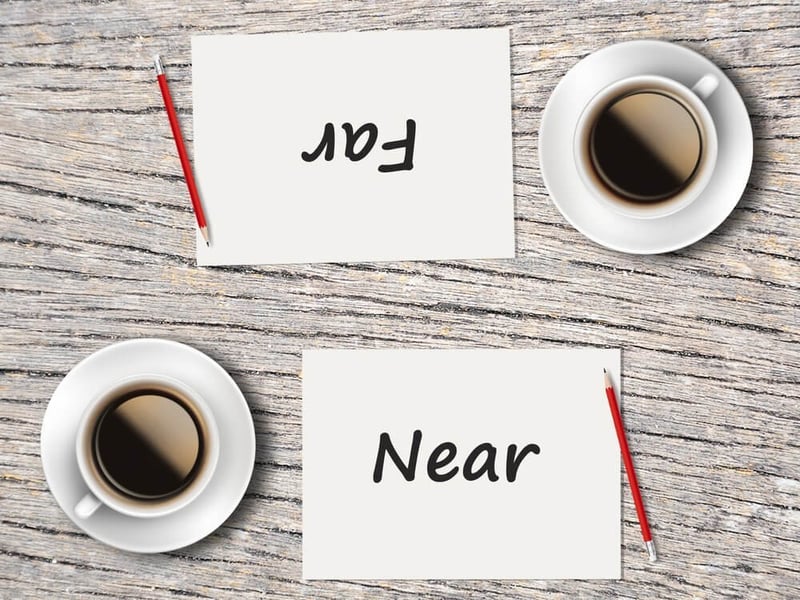Damiana and Joel use objects around the office to show you the various demonstratives (this/that/these/those) and a few common adverbs of place (here/there). Learn which word to use when the object is near the speaker, near the listener, or far from both.
Demonstrativos e Advérbios de Lugar
Demonstratives And Adverbs Of Place
O Que Há No Quarto do Hotel?
What's in the Hotel Room?
Rui and Joel explore the fascinating, every day objects in their hotel room.
A Diana
Diana
A woman shares some gossip about her neighbour, Diana. Notice how different demonstratives are used throughout the dialogue.
Mais Uma Encomenda
One More Package
Carolina may have gone too far with the Christmas shopping!
Jantar na Nova Casa
Dinner In The New House
Maria is pregnant and just moved in to a new home. She loves cooking and decorating, so she invites her cousin Diogo over for dinner and a tour.
O Que é Isso?
What is That?
Telma and Filipe practice their Portuguese skills at the dinner table.
O Vestido Para a Festa
The Dress For The Party
Luísa can’t decide which dress to wear to a party, so she asks her husband for his opinion.
Demonstrative Determiners
In this lesson, we’ll review a topic we’ve covered before, which is Portuguese demonstratives – este, esta, esse, essa, aquele, and aquela – as well as their plural forms. In Portuguese, demonstrative determiners indicate where something is in relation to to the speaker and listener in terms of place or time, and must agree in […]
A Super-Avó
The Super Grandma
Dona Ana is always trying to help out Fernando and Sara with their baby Bruno… although sometimes that help comes in the form of a lecture!
O Fato Faz o Homem – Parte 2
The Suit Makes the Man - Part 2
After exploring all the options, a customer finds the perfect suit and shoes.
Combining "A" With Demonstratives
As previously mentioned, the preposition can be combined with the articles o, a, os, and as to become ao, à, aos, and às. As far as demonstratives are concerned, a can only form contractions with aquele(s), aquela(s), and aquilo. A + Variable Demonstratives a + aquele = a + aqueles = a + aquela = […]
Combining "Em" with Demonstratives
The preposition can be combined with variable and invariable demonstratives to form a number of very useful contractions. Remember that all the same rules for demonstratives remain valid when they appear in the following contractions. Em + Variable Demonstratives Relative Position Demonstrative Contraction Near the speaker: Near the listener: Away from both: These contractions can be used […]
Combining "De" with Demonstratives
You learned in The Preposition “De” (from the first Prepositions unit) that de has several different meanings and can be joined together (contracted) with: articles (do, da, dos, das), and pronouns (dele, dela, deles, delas) De + Variable Demonstratives Another very common combination is with demonstratives. Let’s look at the contractions formed by combining with variable demonstratives: […]
Invariable Demonstrative Pronouns
In the previous lessons of this unit, you learned about variable demonstratives, which change depending on the gender and number of the objects(s) they describe. Here’s some good news for you: invariable demonstrative pronouns are much easier to learn, because as you can see below, there are only 3 of them. You still have to consider the […]
Variable Demonstratives
As we mentioned, when you say this, that, these, or those in Portuguese, you have to be a little more specific… Variable demonstratives are used to indicate all of the following at once: a person or object’s gender the number (one or more) the position in space or time The gender and number part is […]
Introduction to Portuguese Demonstratives
The European Portuguese demonstratives are este(s), esta(s), esse(s), essa(s), aquele(s), aquela(s), isto, isso, and aquilo. identify a particular person or object and establish its location in relation to the speaker, the listener, or simply within the general context. They can tell us, for example, whether something is close or distant, in either space or time. […]



 Damiana
Damiana Joel
Joel
 Rui
Rui
 Eliana
Eliana
 Pedro
Pedro Sandra
Sandra
 Natacha
Natacha



 Joseph
Joseph





